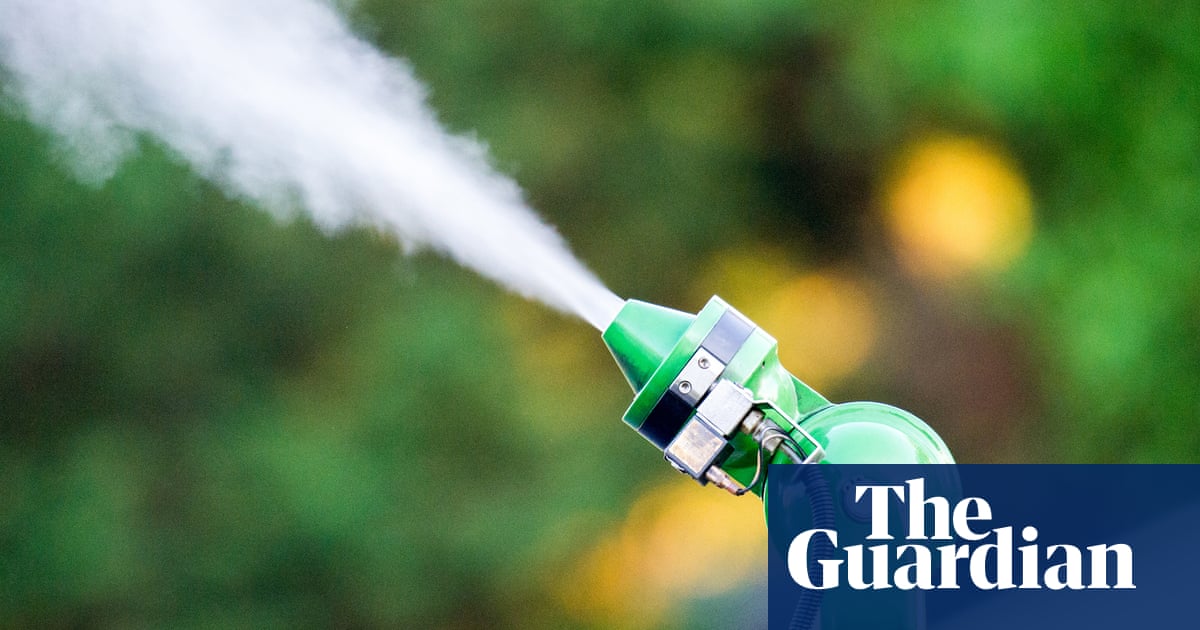Documents obtained from the US Environmental Protection Agency (EPA) indicate the agency may have presented false information to the public about testing for harmful contaminants in pesticides, according to allegations being made by a watchdog group and a former EPA research fellow.
The claims come almost a year to the day after the EPA issued a May 2023 press release that stated the agency found no per- and polyfluoroalkyl substances (PFAS) in testing of samples of certain insecticide products. The press release contradicted a published study by the former EPA researcher that had reported finding PFAS in the same pesticide products.
PFAS contamination is a hot topic in environmental and public health circles because certain types of PFAS are known to be very hazardous for human health, and world governments and public health advocates are pushing to sharply limit exposure to these types of chemicals. Accurate testing for PFAS contamination is key to regulating exposure, making the accuracy and transparency of EPA testing a critical issue.
The allegations that the EPA incorrectly reported some PFAS test results were made Tuesday by the nonprofit group Public Employees for Environmental Responsibility (Peer), led by former EPA employees.
The Peer director of scientific policy Kyla Bennett said that the organization obtained pesticide product testing data from the EPA through a Freedom of Information Act (Foia) request. The documents they received back from the EPA showed the agency had indeed found PFAS in the tested products, directly contradicting the press release the agency had issued.
âItâs pretty outrageous,â said Bennett. âYou donât get to just ignore the stuff that doesnât support your hypothesis. That is not science. That is corruption. I can only think that they were getting pressure from pesticide companies.â
Joining in the allegations is environmental toxicologist Steven Lasee, who authored the 2022 study that the EPA challenged. Lasee is a consultant for state and federal government agencies on PFAS contamination projects and participated as a research fellow for the EPAâs office of research and development from February 2021 to February 2023.
Retraction sought
The EPA declined to comment, saying âbecause these issues relate to a pending formal complaint process, EPA has no further information to provideâ. But in past statements, the agency has presented itself as taking a tough stand on PFAS contamination. The agency recently finalized drinking water limits for PFAS and is classifying two types of PFAS as hazardous substances. And EPA administrator Michael Regan has stated publicly that the adverse health effects of PFAS âcan devastate familiesâ.
The EPA has also recognized the potential for PFAS contamination of pesticides, focusing on pesticides that are stored in fluorinated high-density polyethylene (HDPE) plastic containers. Last year the agency ordered a prominent manufacturer to stop using PFAS chemicals when producing plastic containers for pesticides and other products.
PFAS chemicals have been used by a variety of industries since the 1940s for such things as electronics manufacturing, oil recovery, paints, fire-fighting foams, cleaning products and non-stick cookware. Some types of PFAS have been linked to cancer, damage to the immune system, birth defects, delayed development in children and other health problems.
In challenging the EPA over the testing issue, Peer submitted a letter to the agency demanding a correction of the EPAâs public statement about the pesticide product analyses and a retraction of the agencyâs research memo on the matter.
Peer alleges that as the EPA sought to refute Laseeâs study findings, the agency engaged in âegregiousâ misconduct and is âguilty of numerous departures from both accepted scientific and ethical practicesâ.
The agency âprovided misinformation to a national audience and intentionally damaged Dr Lasee,â the Peer complaint alleges.
Questions about key findings
The Lasee study that kicked off the fight with the EPA was published in November 2022 in the Journal of Hazardous Materials Letters. The study said a key finding was the detection of a very harmful type of PFAS known as perfluorooctane sulfonic acid (PFOS) in six out of 10 insecticides used in cotton fields and in growing other crops, posing a contamination threat to agricultural areas.
The EPAâs response to the study, released six months later, said the agency obtained samples of the same pesticide products from Lasee and also purchased additional products with the same registration numbers to analyze. The agency said unlike Laseeâs results, EPA scientists found no detectable levels of PFOS, nor any of 28 additional PFAS it screened for, and said its equipment and methodology were better than those used by Lasee.
Those findings immediately raised questions about the validity of the testing, according to Lasee and Peer. One concern was that the EPA report did not identify any of the âmatrix spikeâ of PFOS, which was intentionally added to the samples before they were analyzed.
It is common in analytical chemistry to use a matrix spike as a type of quality-control to evaluate the performance of an analytical method. Lasee had not told the agency of the matrix spike, but if their methods were accurate, the agency scientists would have found the spike, he said.
Numerous other flaws and deviations from scientific norms were seen in the testing analyses by the EPA, according to the Peer complaint.
Another significant concern was that while the EPA publicly disclosed the results of two tests conducted on the pesticide product samples, the agencyâs internal documents turned over to Peer in response to the Foia request showed the agency had actually conducted four tests.
The documents show that one of the tests did find evidence of PFOS as well as other types of PFAS, which were not introduced as a matrix spike, Peer said.
Peer said it is unclear why the EPA did not report the positive findings of PFAS in pesticides. Regardless, the âpresence of PFAS in pesticides points to an appalling regulatory breakdown by EPAâ, Peer states in its complaint.
In a letter to Peer responding to some of the concerns raised, the EPA division director Anne Overstreet said the agency âremains confident in our findingsâ and said the agencyâs scientists âmaintained scientific integrity and is in compliance with established good laboratory practicesâ.
Amid the uproar over his paper and the subsequent EPA testing, Lasee sought to reproduce his initial results but was unable to do so. That created enough doubt about his own methodology that he sought to retract his paper.
Now, after seeing the EPAâs internal testing data showing the agency did find PFOS and other types of PFAS in pesticides but failed to disclose those results, he has a new level of doubt â over the credibility of the agency.
âWhen you cherry pick data, you can make it say whatever you want it to say,â Lasee said.
-
This story is co-published with the New Lede, a journalism project of the Environmental Working Group



